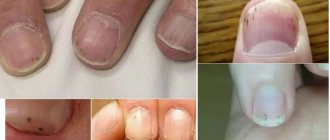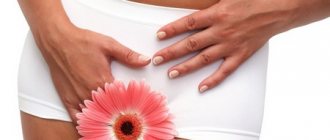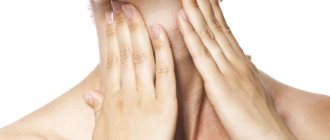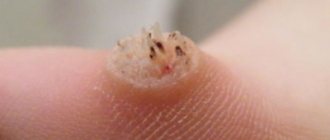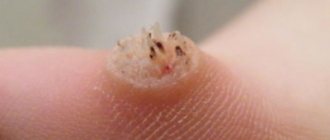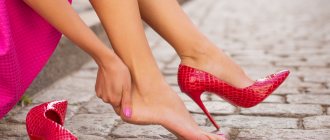Due to prolonged mechanical impact, which is caused by friction or pressure on the foot area, a person develops a callus. This neoplasm does not pose a threat to health and life. Growths are considered a common problem and can be easily removed using medications or hardware techniques. Despite the discomfort from the pathological element on the skin, many do not seek timely medical help, which can lead to an inflammatory process. Let's look at the reasons why the callus became inflamed and what to do in this situation?
What to do with hard calluses?
A hard callus is essentially a dry callus.
Naturally, you need to get rid of it.
Let's take a closer look at some official pharmaceutical products for the treatment of calluses.
Treated with Anticorn Super cream.
It is used to moisturize and gradually soften.
It contains many natural plant components with bactericidal and softening properties.
They are also treated with the oily liquid “Feresol” with a cauterizing effect due to the content of phenol and tricresol.
It also has antimicrobial, anti-inflammatory, bactericidal and softening effects.
They are also treated with a very effective remedy - Roacutane gel.
This gel has a keratolytic effect.
Due to the content of salicylic, lactic, boric, benzoic and citric acids in its composition.
And finally, a few words about the Salipoda patch.
This convenient patch has long proven its effectiveness.
It has a pronounced softening antimicrobial effect.
But before using these products, you must carefully re-read all contraindications and strictly adhere to them.
Interdigital calluses
Sometimes calluses appear in the spaces between the toes on the feet, less often on the hands.
They cause a feeling of great discomfort.
People around them practically do not see them, but they are very painful.
Interdigital calluses are wet calluses.
The interdigital spaces (thumb and second finger, as well as the ring and little fingers) are favorite places for calluses to localize.
Interdigital calluses are common at any age, for both men and women.
Essentially, callus is an adaptive response of the epidermis to prolonged friction or compression.
In which layers of keratinized epidermis are actively built up at the site of mechanical action.
The causes of calluses between the toes are:
- uncomfortable and tight shoes;
- high heels;
- presence - flat feet;
- finger deformities;
- overweight;
- joint diseases (arthrosis, arthritis or gout);
- swelling of the legs.
Hand calluses
31.05.2021
Calluses on the palms of the hands and fingers are quite common. Most often they appear on the inside, but due to certain reasons or stress they can also form on the back of the hand (for example, in boxers, karatekas).
Types of calluses
Depending on the degree and duration of physical impact, calluses come in several types:
- dropsy, or wet calluses . Appear as a result of intense friction or mechanical impact (especially on skin that is not accustomed to physical activity). In places of damage, blisters appear filled with a clear yellowish liquid;
- dry calluses occur as a result of prolonged but not severe exposure. Dry calluses form gradually, the skin on them is very rough and dry, getting rid of them is much more difficult than dropsy;
- Calluses on the hands often hurt because they have a root that goes into the deep layers of the skin . Such calluses must be removed from the roots, otherwise they will appear again.
Why can calluses appear?
As a result of strong physical impacts, the skin on the palms and fingers is injured. The body exhibits a protective function, intensively restores a thicker and rougher layer of skin in the damaged area. This is why calluses in the affected areas. The reasons for the appearance can be very different, but mainly the following can be distinguished:
- mechanical impact. calluses most often appear in athletes, agricultural workers, gardeners, and heavy physical labor workers;
- loads associated with certain professional characteristics. calluses appear on the fingers due to the friction of instruments, pens, brushes on the surface of the skin (pianists, painters, carpenters, joiners, students, secretaries-typists, etc.);
- lack of vitamins A and E in the body.
The causes of blisters or dry growths on the palms and fingers can be random, independent of physical activity. But in any case, this problem should not be ignored.
The most effective methods for treating calluses on the hands
Calluses on the hands often hurt and cause a lot of inconvenience and trouble. Treatment methods depend on the type of formation, but first of all it is necessary to limit the loads and factors that provoke the appearance of calluses .
Drug treatment
To remove formations - dry and core calluses - preparations containing salicylic or lactic acid are used in the form of solutions, ointments and patches. Before applying the preparations, to achieve a greater effect, it is recommended to soften the skin of the hands with warm baths. The drugs are applied directly to the affected area, avoiding contact with a healthy surface.
If a callus on your hand or finger hurts, the first thing to do is consult a doctor . It is possible that the skin is damaged too deeply and inflammation or purulent infection may occur of the callus
Preventive measures
To avoid the appearance of calluses on your hands, you need to wash your hands with warm water, take softening baths, regularly apply moisturizing and nourishing creams, and treat problem areas with pumice. It is better to use protective gloves when working with various tools. Consuming vitamins A and E will help maintain healthy skin and relieve dryness and flaking.
Published in Surgery Premium Clinic
Suppuration of calluses
If calluses are treated untimely and incorrectly, they can become inflamed and fester.
In fact, the appearance of purulent exudate also indicates that the immune system is working fully and is trying to cope with various infections that appear in the outbreak .
Pus threatens to enter the bloodstream, which can result in sepsis, blockage of blood vessels or embolism.
Chamomile baths and hydrogen peroxide are the first means to treat festering calluses, after which you need to consult a doctor or a medical facility.
To prevent the infection from spreading, it is necessary to treat the callus with gel or ointment with an antiseptic.
Then secure this product with a sterile bandage.
Treatment is carried out by applying the drug to the area of the leg affected by the pathological process.
Then it is all covered with a sterile bandage.
And this procedure should be done at least twice during the day, and preferably three.
Purulent forms must be washed with solutions of potassium permanganate, furatsilin or three percent hydrogen peroxide.
With advanced purulent calluses, seeking help from qualified specialists is simply a must.
To remove pus from a callus, it must be drained.
Based on individual characteristics and the degree of complexity of the purulent process, the specialist prescribes therapeutic measures.
Treatment with medications
Inflammation of a callus on the toe requires a qualified approach from a medical specialist. The doctor will conduct a physical examination and prescribe medications, ointments and topical creams that will help reduce the inflammatory process.
At this stage, there is no talk of removing callus through cryodestruction or laser techniques. The main goal of conservative therapy is to reduce inflammation and prevent intoxication of the body.
The treatment process may include the following tablets:
- If the leg hurts severely and the patient cannot step on the limb, then the use of painkillers is recommended. Most often, drugs based on ketorolac are prescribed. You can take a tablet of Analgin, Spazmalgon;
- Anti-inflammatory drugs in tablets - Movalis, Ibuprofen (gives an analgesic and anti-inflammatory effect). The advisability of using non-steroidal anti-inflammatory drugs is determined on an individual basis, depending on the area of the lesion and the degree of the inflammatory process.
To reduce friction from shoes, it is recommended to create a barrier of adhesive tape and cotton wool. You can also use a specialized hydrocolloid patch, which is designed to speed up the recovery of damaged tissue.
Surgitron device: principle of operation and areas of application of the radioknife
For your information, hydrocolloid patches not only reduce the load on the affected area, but also absorb exudate that is released from the callus.
The most effective ointments that help reduce inflammation and speed up the healing of damaged tissues:
- Vishnevsky ointment. The composition of the medicine includes tar, xeroform, castor oil. It is not recommended to use if there is a history of impaired liver function. Organic intolerance to the active ingredients is a contraindication. In the latter case, the use leads to the development of local side effects - redness, irritation of the skin, which increases inflammation and pain.
- Levomekol has an effective antimicrobial effect and helps combat inflammation of any localization. It is not recommended to use if dermatological problems are observed in the affected area - psoriasis, eczema, fungal infection. The ointment is used in the form of compresses. A small amount is applied to a cotton pad, applied to the problem area, and fixed with an adhesive plaster. Apply twice a day, the course of therapy is determined individually.
Methods for quickly relieving inflammation include drugs such as Chlorhexidine, Miramistin, brilliant green (used if there is no weeping due to inflammation). These medications are used at the initial stage of the pathological process; in advanced cases they will not help.
If the described medications do not produce results, the callus begins to become even more inflamed and painful, then antibacterial therapy will be required for 10 days to relieve inflammation.
Old calluses and calluses
Old calluses are dry formations that are not immediately removed.
If irritation on the surface of the skin is long-term and chronic, then the callus turns into a lump, which is very painful and annoying.
First you need to steam it and minimize the load on it, remove friction.
Wear only comfortable, “trodden on” shoes.
Most often, such “old” calluses and calluses-bumps form on the soles of the feet.
If you remove the cause of the callus rubbing, it may go away on its own.
Conversely, if the shoes continue to rub, then calluses will appear again and again.
Dry old calluses are removed using a laser beam.
In this case, local anesthesia is used.
There are certain criteria, when met, it is clear that the callus needs to be removed:
- pain when pressing on the callus (on the legs when walking, on the hands when working);
- if the callus is infected and inflamed;
- if the callus is core.
Calluses form on the skin as a result of a viral or fungal infection.
Or a foreign body is discovered in the thickness - a grain of sand or a splinter.
Is it possible to pierce a callus with liquid?
The blood plasma filling the bladder protects the injury site from pain. Therefore, small calluses usually heal on their own and do not need piercing. To do this, simply cover the problem area with a band-aid.
If the formation is large in diameter and causes significant discomfort, it can be pierced. Otherwise, the protruding callus may burst on its own as a result of injury. After a puncture, healing proceeds faster than with an accidental rupture.
To avoid infection and ensure rapid healing, you must follow a number of rules:
- Before piercing, treat damaged skin and hands with an antiseptic solution.
- Use a sterile needle. To disinfect, you can hold it over a fire or put it in alcohol for a few minutes.
- Make punctures on the sides of the callus, holding the needle parallel to the skin.
- If the callus is large, pierce it in several places to completely release the liquid.
- Use gentle movements to get rid of the liquid inside.
- It is better to pierce the first day after the formation of a blister.
- After the puncture, do not remove the covering skin under any circumstances; as it dries, it will come off on its own.
Which doctor should I contact for a callus?
The treatment and removal of calluses, in particular on the feet, is carried out by different doctors - dermatologists, cosmetologists, dermatocosmetologists and podologists.
But it is best to be treated by a podiatrist, because he is a specialized specialist on these issues.
Diseases of the cardiovascular system and diabetes mellitus threaten the appearance of purulent calluses.
Therefore, in this category of patients, it is especially important to properly and promptly treat emerging calluses and preventively remove the reasons why they appear.
Experienced podiatrists successfully combat purulent inflammation and lymph flow.
Sometimes antibiotic therapy is indispensable.
If the infection is very serious, then it is necessary to take pills and apply local treatment.
Special ointments and compresses.
And understand that if self-medication at home is ineffective, you need to contact a specialist as soon as possible for effective treatment.
Treatment of water callus
Small water calluses heal on their own. But in some cases, aching pain occurs, the liquid takes on an opaque cloudy appearance and the skin around the wound becomes inflamed. This indicates infection of education. It is strictly forbidden to self-medicate; you need to urgently go to the clinic.
If there are no signs of inflammation, then you can speed up the healing process using medications.
The following ointments are suitable for treating wet calluses:
- Levomekol – combines antiseptic and healing properties. The wet callus is sealed with a plaster or covered with a sterile bandage. It is necessary to change at least 3 times a day.
- Salicylic ointment – anesthetizes, relieves inflammation and disinfects. The product is left overnight, and in the morning the leg should be rinsed thoroughly.
- Compeed patch for wet calluses is impregnated with a special composition that disinfects and dries the blister.
Apply the product in a thick layer onto a sterile bandage and apply to the painful area. It is better to apply bandages at night.
For quick healing of formations, it is better to use Compeed patches for wet calluses with hydrocolloid properties. They are made using special technology from breathable fabric. The patches protect the wound from infection, accelerate the skin regeneration process and provide pain relief.
Complications of calluses
Failure to pay attention to calluses can lead to dangerous and unpleasant consequences.
Especially wet, rod and water ones.
But the presence of rod formations causes severe pain and discomfort, and the presence of wet and rod formations often leads to infection.
Which threatens with an abscess, abscess, and in advanced cases even gangrene.
Corns lead to cracks on the plantar surface of the feet.
At the same time, walking is very painful.
Secondary infection - bacteria and fungi - easily penetrates through these cracks.
The appearance of calluses is often caused by a viral infection.
You definitely need to get rid of it; just removing the calluses will not be enough.
General treatment with antiviral drugs is mandatory.
You need to remember that calluses are not such a harmless thing, and take them seriously.
Reasons for the formation of callus
Calluses can appear as a result of the following reasons:
- wearing shoes of the wrong size (usually smaller than the true size);
- walking barefoot for a long time;
- wearing shoes with high heels or, conversely, shoes with flat soles;
- constant mechanical irritation of the skin associated with physical work;
In addition, a callus can be the result of a corn, which appears due to constant mechanical pressure on the skin.
Callus hurts: how to remove and where to remove
Today, there are various ways to get rid of calluses and corns.
They use special tools and devices.
Various techniques are used:
- surgical excision;
- removal using a special device with grinding attachments (cutters);
- cryodestruction (freezing with liquid nitrogen);
- using a laser beam.
The most effective, reliable and safe method is considered to be using laser technology.
Using a carbon dioxide laser beam, the keratinized epithelial layer is evaporated layer by layer without damaging healthy skin.
The main advantages of using a laser to remove calluses are:
- the presence of bloodlessness and complete sterility, since the laser beam causes a bactericidal effect;
- when removing calluses (at one time), scars and other defects do not form;
- rapid rehabilitation (after surgical interventions you can immediately “be in service”).
Such removal can be carried out in specialized offices and clinics where there is the necessary equipment and specialists.
Treatment of calluses of the foot
Treatment methods for dry callus are aimed at its complete removal. The most effective are:
- Hardware drilling of the core callus.
It is carried out in cosmetology centers. The procedure involves removing (drilling out) the callus with a shaft using a special cutter, which is selected strictly according to size. This method allows you to remove the formation without damaging surrounding tissue. In this case, it is important that not even the slightest part of the rod remains in the recess. Since the callus can form again. Having carefully drilled out the callus, a medicinal substance with antiseptic properties is applied in its place to prevent infection. Healing occurs within a few days.
- Laser callus removal.
It is used in advanced cases and gives a good effect. Using a laser, the rod is destroyed along its entire length. After removal, a wound the size of a callus remains, which heals within 2-3 weeks. Dressings must be performed daily.
- Cryodestruction of callus with a rod.
The technique involves exposing the callus to liquid nitrogen. The method is painless and does not allow you to get rid of calluses in one procedure. As a rule, it is performed 2-3 times until complete removal. This is not very convenient for the patient.
At home, getting rid of calluses on your feet is very difficult and takes several months.
You can cure a callus at home only at an early stage, while it resembles a corn, without a stem. The following tools are used:
- Keratolytic ointments, creams and liquids:
“Super Antimozolin” ointment, “Stop-callus” liquid. These products soften the callus well and help remove it. They must be used with caution and strictly according to the instructions, as they can cause chemical burns to surrounding tissues.
- Plasters.
For example, "Salipod". Its active ingredient is salicylic acid, which softens keratinized tissue. The Enza patch is also used; it contains propolis, salicylic acid and other components. The patches should not be used if there are other skin lesions. Such as warts, fibroids, etc.

